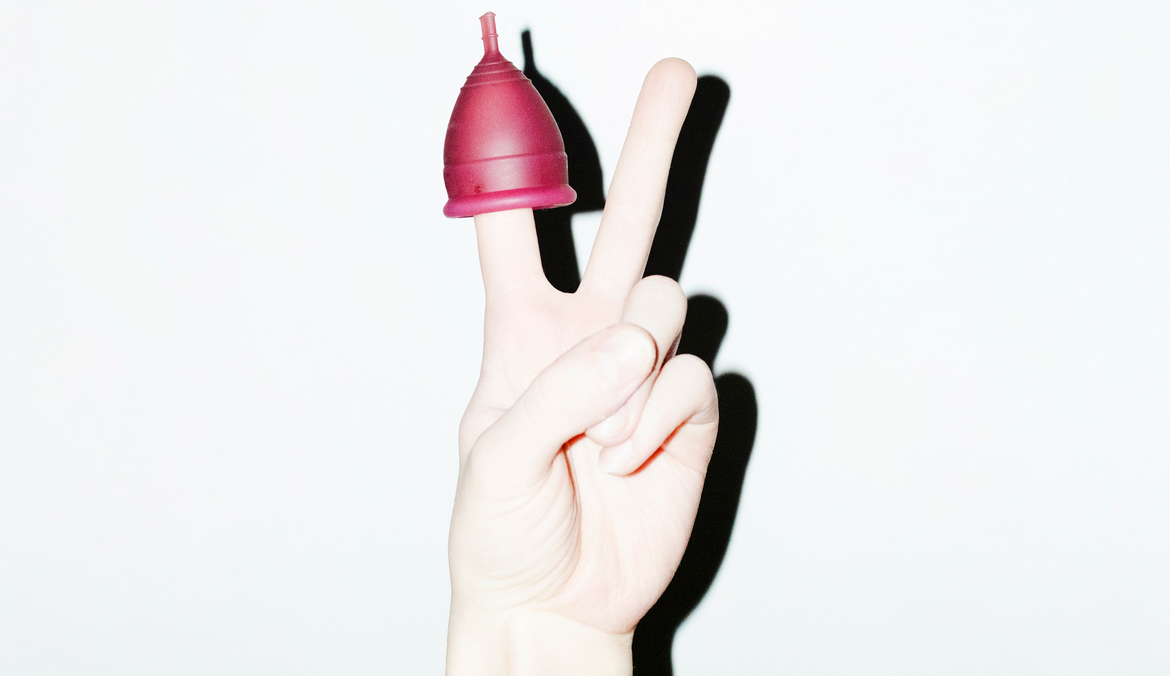Just Wondering: Why Do I Sometimes Get My Period Twice in One Month?
You got your period earlier this month…and now it seems like you’re getting it again. Um…is this normal?
Often what seems like a second period is actually just spotting—basically bleeding that’s so light you don’t need a pad or tampon. But there are also some cases where a person could actually have bleeding that happens more than once a month, says Kelly Culwell, MD, a board-certified OB/GYN in San Diego, California.
There are lots of reasons why that can happen, some of which are NBD and some of which could be serious. Here’s a rundown of the most common culprits behind two periods in one month, plus what you can do to get your menstrual cycles more regular.
11 reasons you might get your period twice in one month
1. Your cycle
A typical menstrual cycle is 28 days, according to the Office on Women’s Health, although each person is different and the length of your cycle can change as you age. Cycles between 24 and 38 days are considered “normal.” When you compare that to the average 30- or 31-day month, it’s easy to see how you might have a period at the beginning of the month and start another before the month is up.
2. Hormonal birth control
You can definitely have spotting or breakthrough bleeding when you’re on a hormonal birth control method like the pill (including the over-the-counter Opill) or hormonal IUD, Dr. Culwell says. That’s especially true if you just started a new birth control or if your BC regimen was disrupted (like if you missed a pill, you’re taking antibiotics, or you’re throwing up or having diarrhea), per the Mayo Clinic.
Breakthrough bleeding should ease up on its own within a couple cycles. But let your doc know if it’s not getting better or if the bleeding intensifies.
3. Ovulation
Ovulation—when your ovary releases an egg —usually happens midway through your cycle. Some people experience pain in their lower abdomen, and on rare occasions, it’s also possible to have some spotting (which is usually pinkish or reddish), Dr. Culwell says. The symptoms typically last about a day or less, per the Cleveland Clinic. So, it’s not a period, but you might mistake ovulation for menstruation because you may have a crampy feeling and see some blood on your TP for a day or so.
4. Infection
Sometimes spotting can be a sign of an infection, especially if it’s accompanied by symptoms like pain, itching, or burning. Cervicitis, an infection caused by inflammation of the cervix, is a common culprit, says Dr. Culwell. Cervicitis is often caused by a sexually transmitted infection, per Mount Sinai, and other symptoms you might notice include painful sex and bleeding after sex, a heavy feeling in the pelvis, vaginal itching, pain when you pee, and abnormal discharge that’s gray, white, or yellow.
Less often, infections like bacterial vaginosis, trichomoniasis (an STI), or even yeast infections can also cause spotting, according to the Cleveland Clinic.
5. Fibroids or polyps
Fibroids and polyps are two types of uterine growths that can potentially cause spotting or bleeding, Dr. Culwell says. (Fibroids are always benign. Polyps can be benign too, but they also have the potential to turn cancerous.) They can also cause heavier periods, a feeling of pain or fullness in your lower abdomen (which you could mistake for cramps but no period), frequent urination, and painful sex, the Cleveland Clinic notes.
Small fibroids and polyps may not need to be treated—sometimes you can just keep an eye on them and they’ll resolve on their own. But if a growth is causing symptoms, your doctor might recommend meds to shrink the growth or surgery to remove it.
6. Pregnancy
Spotting, or what doctors call implantation bleeding (when a fertilized egg latches on to the lining of the uterus and starts to grow), can be a sign of pregnancy very early on, Dr. Culwell says. You might also have other early pregnancy symptoms like a headache, breast tenderness, bloating, nausea, or fatigue, per the Cleveland Clinic.
Implantation bleeding usually happens 10 to 14 days after ovulation, which is about when you might expect your next period. So it’s possible that it would happen within the same month as a period if you had your period at the beginning of the month and then implantation bleeding at the end.
7. Puberty
Spotting and irregular periods can be pretty typical during the first year or two of menstruation, as the parts of the brain that regulate periods are still getting into the swing of things, according to Nemours. It’s also common for a younger person’s cycle to get disrupted by things like stress, illness, or rapid weight changes—again, because the body is just getting used to having a monthly period.
8. Perimenopause
It’s also pretty normal to have more spotting or less regular periods (shorter or longer) as you reach your 40s and menstruation starts to wind down, Dr. Culwell says. In fact, irregular periods tend to be one of the first signs of perimenopause, followed by symptoms like hot flashes, sleep problems, vaginal dryness, mood changes, and changes in your sex drive, notes the American College of Obstetricians and Gynecologists (ACOG).
Some of these symptoms will ease up once you reach menopause (when you’ve gone 12 months without a period). Treatments like hormonal birth control and hormonal therapy can also help you feel better, ACOG notes.
9. Hormonal imbalances
Some people with polycystic ovary syndrome or PCOS will get two periods in one month, Dr. Culwell says. The condition, which is caused by higher-than-normal levels of hormones like androgens and insulin, can make your cycle irregular and cause excessive hair growth, acne, and weight gain, according to the Office on Women’s Health. Losing weight and taking hormonal meds (like birth control, anti-androgen medications, or metformin) can help manage symptoms.
10. Stress
Heightened levels of the stress hormone cortisol is more likely to cause you to skip a period than have two in one month, according to the Cleveland Clinic. But everyone’s different, and for some folks, severe tension might result in having more frequent periods, Dr. Culwell says. The problem should ease up within a couple of months once the major stressor starts to resolve, she adds. (If it doesn’t, that’s a sign that you should seek support for the problem, like talking with a therapist.)
11. Thyroid issues
Your thyroid helps regulate your periods, so any condition that causes the gland to make too much or too little thyroid hormone can potentially cause your periods to come more (or less) often, per the Office on Women’s Health. Symptoms can vary depending on the specific condition, but they’re often marked by changes in weight, energy levels, and sleeping patterns.
Who’s at risk for getting multiple periods in one month?
Lots of things can potentially increase your chances for spotting or having irregular periods. According to the National Institutes of Health (NIH), these can include:
- Being in your 40s (because, perimenopause)
- Taking hormonal birth control
- Having a hormonal imbalance, including PCOS, diabetes, or a thyroid condition
- Being under extreme stress
Are there any complications of getting two periods in one month?
Two biggies right off the bat. First, having two periods in one month means you’re having increased blood loss. And that could put you at risk for anemia, Dr. Culwell says. Period irregularities can also make it harder to figure out when you’re ovulating. As a result, you might have a harder time conceiving if you’re trying to get pregnant.
Those are the direct complications, at least. Because frequent spotting or irregular periods are often a sign of an underlying health condition, the health condition itself could cause other complications if it isn’t addressed. Unmanaged PCOS, for instance, can put you at risk for problems like diabetes and sleep apnea, the Mayo Clinic notes.
How to regulate your cycle
The main go-to for regulating an unpredictable cycle is by taking hormonal birth control, Dr. Culwell says. Depending on the underlying cause, other medications might also be useful. Hormone therapy can help regulate your cycles during perimenopause, for instance, while gonadotropin-releasing hormone agonists are sometimes prescribed to shrink fibroids or polyps.
Lifestyle changes can help too, especially if you think stress might be factoring into your period irregularity. Per the Cleveland Clinic, you can:
- Eat a wholesome diet
- Get regular exercise
- Get enough sleep
- Practice stress-management techniques (like yoga, journaling, gardening—basically anything that helps you feel more chill!)
When to see your gynecologist about irregular periods
One off month or some occasional spotting isn’t usually a big deal. But you should let your doctor know if your periods are irregular for more than a couple months, or if you’re having frequent spotting, because there could be an underlying problem that needs to be treated.
FAQ
Does two periods a month mean pregnancy?
It’s possible to have some light spotting, called implantation bleeding, shortly after becoming pregnant, which some people might interpret as a second period. An easy way to tell if that’s what you’re dealing with: Take a pregnancy test. “If your periods ever change in frequency, amount, or both, it’s always a good idea to check for pregnancy first,” Dr. Culwell says.
Can stress cause a second period?
Intense stress is more likely to make you skip a period, but for some people, the result could be more frequent periods, says Dr. Culwell.
Does a two-day period mean I’m pregnant?
Light spotting can be a sign of early pregnancy, especially if it’s accompanied by other symptoms like headache, breast tenderness, or fatigue. Again, the easiest way to confirm is by taking a home pregnancy test.
How do you count your menstrual cycle?
Get an app! JK. Before you can track your cycle you’ll want to get a sense of your body’s typical timing. So start by marking the days you have your periods on a calendar for a couple months, recommends Planned Parenthood. That’ll tell you how long your periods tend to be. The amount of time from the start of one period to the start of the next period also tells you how long your cycles are in totalidade. (The average is 28 days.)
Once you have that info, you can start tracking when your future periods will likely happen. You can also figure out when you’ll be ovulating, if you’re trying to get pregnant. That’s typically around 14 days before your next scheduled period, on a 28-day cycle, notes the Mayo Clinic.
—reviewed by Andrea Braden, MD, OB/GYN


